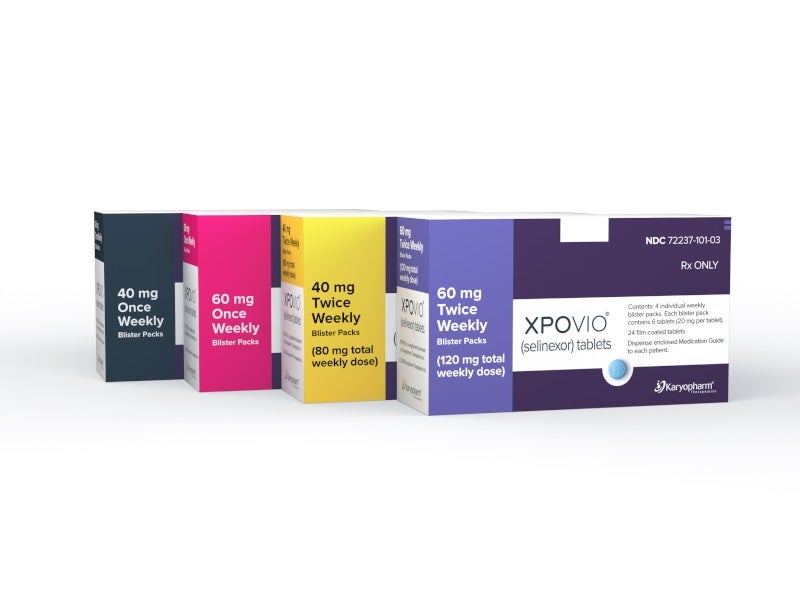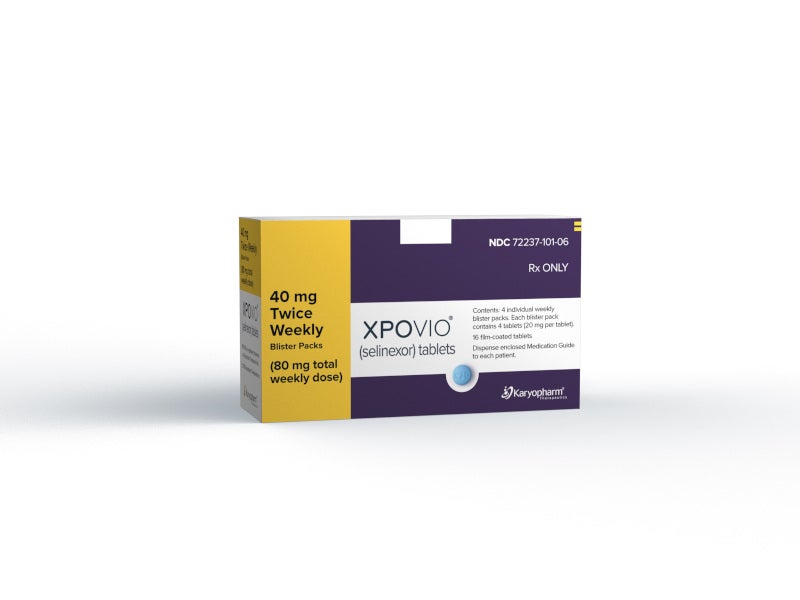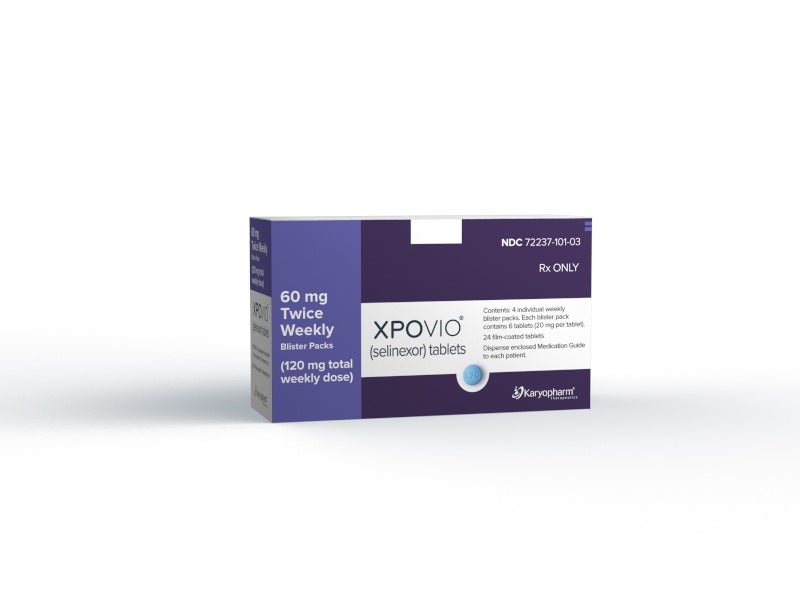XPOVIO® (selinexor) is the only single-agent oral therapy indicated for the treatment of patients with relapsed or refractory diffuse large b-cell lymphoma (DLBCL).
It is the first and only US Food and Drug Administration (FDA)-approved nuclear export inhibitor used for the treatment of both multiple myeloma and DLBCL.
XPOVIO approvals
Developed by Karyopharm Therapeutics, the first new drug application (NDA) for XPOVIO (selinexor) was submitted to the US Food and Drug Administration (FDA) for the treatment for patients with Penta-refractory multiple myeloma in August 2018 and the drug was accepted for review in October 2018.
The FDA approved XPOVIA in combination with dexamethasone for the treatment of relapsed or refractory multiple myeloma (RRMM) in July 2019, under accelerated approval programme.
A supplemental new drug application (sNDA) for the treatment of DLBCL was submitted to the FDA in December 2019 and the drug was granted a priority review in February 2020.
The FDA approved XPOVIA for its second indication, relapsed or refractory dDLBCL, including DLBCL arising from follicular lymphoma, after at least two lines of systemic therapy, in June 2020. The indication was approved under accelerated approval based on the response rate.
XPOVIO was granted priority review, orphan drug and fast track designations from the FDA for the treatment for patients with relapsed or refractory DLBCL.
Karyopharm is also expected to submit a marketing authorisation application (MAA) to the European Medicines Agency (EMA) for XPOVIA for relapsed or refractory DLBCL in 2021.
XPOVIO is sold in the US market through Onco360 or Biologics Pharmacies.
XPOVIO (selinexor) is available as oral tablets with the recommended initial dosage of 60mg for intake on days one and three of each week.
Diffuse large b-cell lymphoma causes and symptoms
DLBCL is a type of cancer that grows fast and affects white blood cells called lymphocytes. It is the most common type of non-Hodgkin lymphoma (NHL).
DLBCL may develop in lymph nodes or areas outside the lymph nodes such as the gastrointestinal tract, testes, thyroid gland, skin, breast, bones, brain, or essentially any organ in the body. It may be localised or spread throughout the body.
The exact cause of DLBCL is unknown and the common symptoms include initially lump formation in the groin, armpit, or neck region, weight loss, itching, cough, fever, night sweats and chest pain.
Selinexor mechanism of action
Selinexor is a first-in-class oral selective nuclear export inhibitor, which works by actively binding to export protein 1 (XPO1 or CRM1) and inhibiting it.
Selinexor inhibits the nuclear export of tumour suppressors, growth regulators and anti-inflammatory proteins, resulting in the accumulation of such proteins in the nucleus and the improvement of their anti-cancer activity in the cells.
Forced nuclear preservation of these proteins will overcome a multitude of oncogenic pathways that if unchecked, allow unrestrained growth and division of cancer cells with significant DNA damage.
Selinexor displayed pro-apoptotic action in vitro in several myeloma cell lines, patient tumour samples, and in murine xenograft models.
Clinical trials on XPOVIO
FDA approval of XPOVIO is based on the open-label, multi-centre, single-arm, phase 2b clinical trial, SADAL (Selinexor Against Diffuse Aggressive Lymphoma).
The study evaluated 134 adult patients with relapsed or refractory DLBCL, not otherwise specified (NOS), after two to five systemic regimens.
Patients were administered XPOVIO 60mg orally on the first and third days of each week until disease progression or unacceptable toxicity.
The study involved at least 60 days after the last systemic therapy, with a minimum of 98 days in patients with refractory disease (defined as less than partial response) to last systemic therapy.
The primary efficacy outcome measure was overall response rate (ORR) and response duration, as reviewed by an independent review committee using Lugano 2014 criteria. The secondary outcome included a median duration of response (DOR) in the responding patients.
In 134 patients, the ORR was 29% including complete responses (CRs) in 18 patients (13%) and partial responses (PRs) in 21 patients (16%).
Approximately 56% of the responding patients retained a response at three months, while 38% at six months, and 15% at 12 months.
The most common adverse reactions observed during the trial were diarrhoea, constipation, vomiting, nausea, weight decrease, fatigue, pyrexia and appetite decrease.
Patients also experienced anaemia, neutropenia, lymphopenia, hyponatremia, thrombocytopenia, changes in mental status and dizziness.






